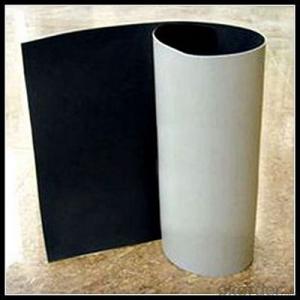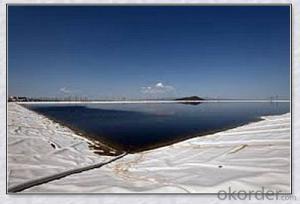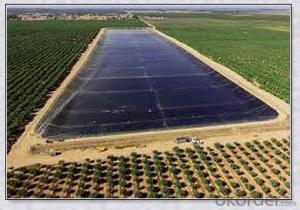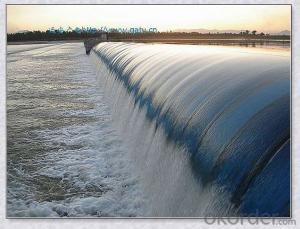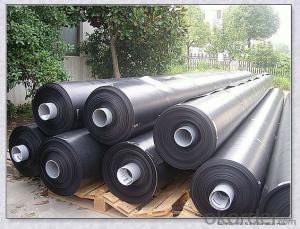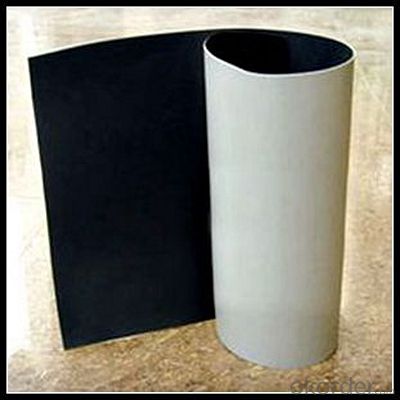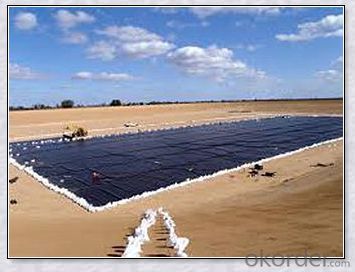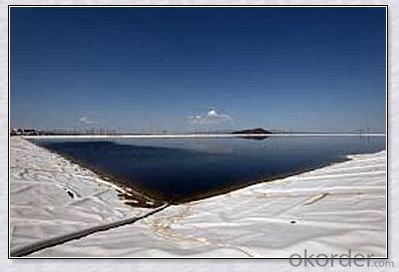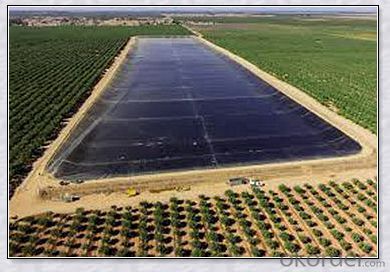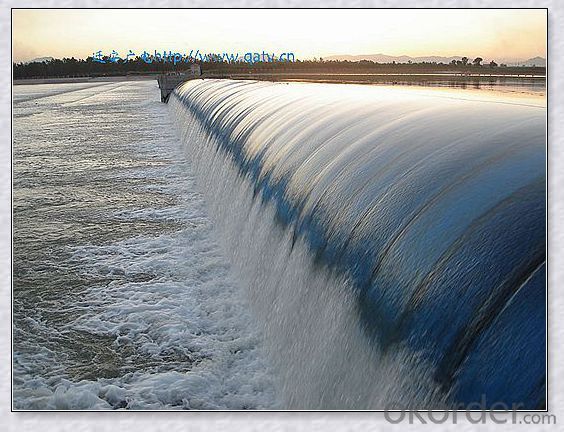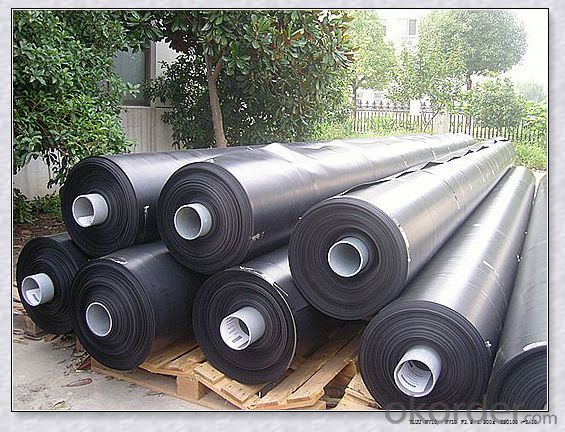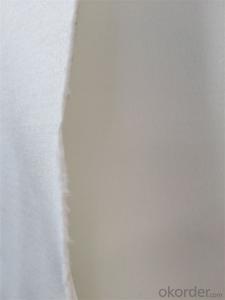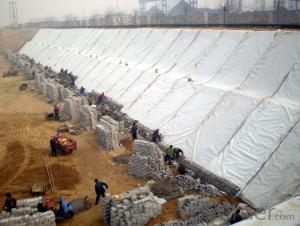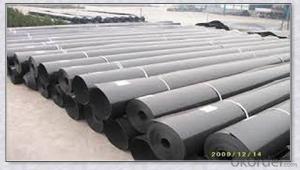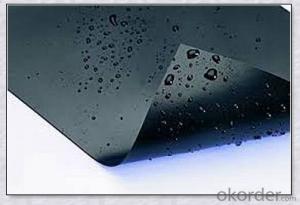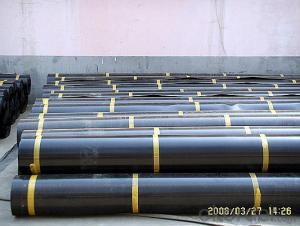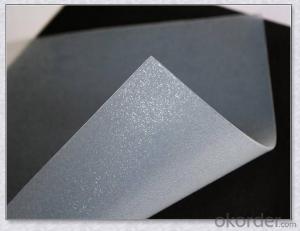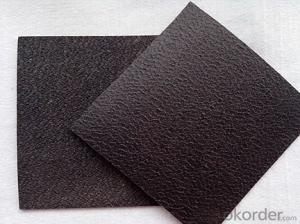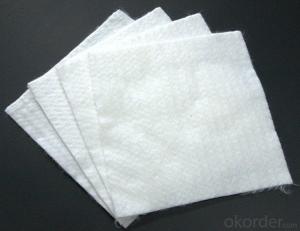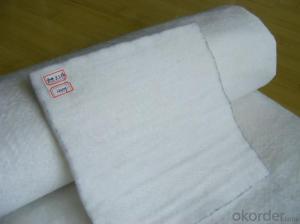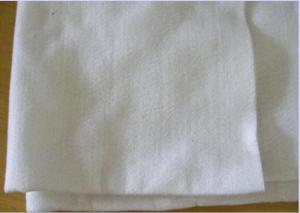Geotextil Precio Polypropylene Polyvinyl Chloride Smooth Geomembrane Roll
- Loading Port:
- China main port
- Payment Terms:
- TT OR LC
- Min Order Qty:
- 1000 m²
- Supply Capability:
- 1000000 m²/month
OKorder Service Pledge
OKorder Financial Service
You Might Also Like
Specification
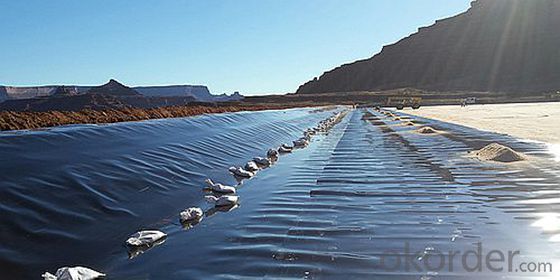
HDPE Anti-permeable film Application
1) Environmental protection, sanitation (such as solid waste landfills, sewage treatment plants, power plants Chi-conditioning, industrial, hospital solid waste, etc.) .
2) Water (such as rivers, lakes and reservoirs of the anti-dam, plugging, reinforcement of the canal seepage, the vertical wall of the heart, slope protection, etc.).
3) Municipal Engineering (subway, on the ground floor of the building, planted roof, the roof garden of anti-seepage, sewage pipes lining, etc.).
4) Landscape (man-made lake, river, reservoir, golf courses reservoirs of the substrate, slope protection, green lawn of the waterproof moisture, etc.).
5) Petrochemical (chemical plants, oil refineries, gas storage tanks of the anti-chemical reaction tanks, sedimentation tanks of the lining, etc.).
Technical specifications of HDPE geomembrane:
a) Density ≥ 0.94g/m2
b) Tensile Strength ≥25Mpa
c) Elongation at Break ≥ 550%
d) Right-angled Tear ≥ 110N/mm
e.)Puncture Strength ≥ 550N
f.) Permeability Coefficient ≤1.0xe-13g.cm/(cm2.S.Pa)
g.) -70oC Low Temperature Impact Brittle Property: good.
h.) Chemical Resistance: at 80oC, marinated in 5g/L Nacl for a long time, it will not erode or swell.
Packaging & Shipping
Packing: PLASTIC FILM INSIDE, AND WOVEN BAG OUTSIDE
Shipping: About 15 days after receipt the deposit
Our Service
Quality assurance
1.On a regular basis or as per your request,we entrust national testing agencies to conduct quality inspections
2. Strictly in accordance with the ISO9001-2008 international quality system standard,we monitor and manage the whole process throughout production,quality testing,and measurement to ensure product quality
3. For quality-related construction delay or substandard construction(except for damage or losses due to customer’s responsibility or irresistible natural disasters),we have refunding,replacement,and repair services.We will respond to customers’ feedbacks on quality issues within 24 hours.
After-sales service
1.In order to provide customers with comprehensive technical support,we will provide technical and other related information upon request in a timely manner.
2.In required,we will appoint specialized technicians to the construction site to give technical trainings to construction people,and offer technical guidance throughout the whole construction process.
3.For damage due to shipment and delivery,after we receive the complaint,we will check the issure through provided pictures and videos.If our responsibility is confirmed,we wil offer free replacement.
4.When the construction is completed,as your request,our technical staff may participate in the final acceptance.
FAQ:
Q: What kind of payments does jenor support?
A: T/T, L/C, Cash are accepted.
Q: Do you charge for the samples?
A: Accordeing to our company policy, the samples are free, we only charge the freight fee. And we will return the freight fee during the next order.
Q: Can you produce according to customers' design?
A: Sure, we are professional manufacturer, OEM and ODM are both welcome.
Q: Do you have other products?
A: Yes, please check the pictures:
- Q: Can geotextiles be used in geothermal energy projects?
- Yes, geotextiles can be used in geothermal energy projects. Geotextiles are often used as a separation and filtration layer in geothermal systems to prevent the mixing of different types of soils and to enhance drainage. They can also be employed as a reinforcement material to increase the stability of the ground during the installation of geothermal wells.
- Q: How do geotextiles help with erosion control on slopes?
- Geotextiles help with erosion control on slopes by providing a physical barrier that stabilizes the soil and prevents erosion. These synthetic fabrics are placed on the slope surface to act as a filter, allowing water to pass through while retaining soil particles. This helps to reduce the velocity of runoff, prevent soil erosion, and promote the growth of vegetation.
- Q: Where is the geotextile in the municipal works?
- Conservation, consideration, there is more green and more Chinese geotextile material manufacturers
- Q: What are the key considerations for geotextile installation in areas with high seismic activity?
- Some key considerations for geotextile installation in areas with high seismic activity include selecting geotextiles that have high tensile strength and flexibility to withstand ground movement during earthquakes. It is also important to properly anchor the geotextiles to prevent movement or displacement. Additionally, the design and installation of the geotextiles should take into account the potential for liquefaction and soil settlement during seismic events to ensure their effectiveness in stabilizing the ground and preventing erosion. Regular inspections and maintenance should be conducted to identify any damage or displacement caused by seismic activity and address them promptly.
- Q: Are geotextiles poisonous?
- Geotextile is not toxic, the production of geotextile raw materials are polyester (PET) or polypropylene (PP). Polyester and polypropylene have become daily necessities. Many of the mineral water bottles are also produced by PET and PP raw materials.
- Q: The amount of geotextile drainage of the drainage pipe, as well as the amount of gravel block ye count
- Are you talking about plastic blinds? do you need? I specialize in producing geotextile materials
- Q: Can geotextiles be used in the construction of sports fields?
- Yes, geotextiles can be used in the construction of sports fields. Geotextiles are often used as a barrier between the soil and the playing surface to prevent weed growth, stabilize the soil, and improve drainage. They can also enhance the durability and longevity of the sports field by preventing soil erosion and reducing the risk of subsidence.
- Q: Can geotextiles be used in shoreline stabilization projects?
- Yes, geotextiles can be used in shoreline stabilization projects. Geotextiles are often used to control erosion, prevent soil displacement, and provide stability to shorelines by acting as a barrier against water flow and wave action. They can help to reinforce the soil and provide long-term protection to shorelines, making them a valuable tool in shoreline stabilization projects.
- Q: Composite waterproof board, is the waterproof board and geotextile stick together call it?
- Yes. Now there are mainly adhesive technology, thermal composite process, Laminating process.
- Q: What are the different geotextile durability testing standards?
- There are several geotextile durability testing standards, including the ASTM D4355-17 for durability of geotextiles by accelerated weathering exposure, ASTM D4751-10 for determining the apparent opening size of a geotextile, ASTM D6768-18 for evaluating the effects of heat on geotextiles, and ISO 10319:2015 for determining the resistance of geotextiles to weathering.
Send your message to us
Geotextil Precio Polypropylene Polyvinyl Chloride Smooth Geomembrane Roll
- Loading Port:
- China main port
- Payment Terms:
- TT OR LC
- Min Order Qty:
- 1000 m²
- Supply Capability:
- 1000000 m²/month
OKorder Service Pledge
OKorder Financial Service
Similar products
Hot products
Hot Searches
Related keywords
